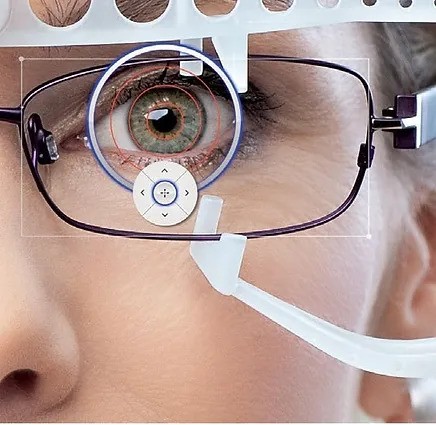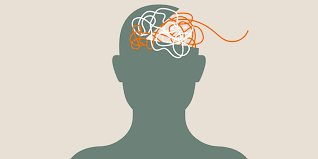Living with kyphosis, a condition characterized by an excessive outward curvature of the spine, can be challenging. It not only affects physical appearance but also causes pain, discomfort, and functional limitations. However, with proper management and expert tips, individuals with kyphosis can improve their posture and find significant pain relief. This blog will delve into the nuances of kyphosis, explore its causes and symptoms, and provide expert strategies by best orthopaedic doctors in Patiala for better posture and pain management.

Understanding Kyphosis
What is Kyphosis?
Kyphosis refers to an exaggerated forward rounding of the upper back. While a certain degree of curvature is normal (20 to 45 degrees), kyphosis occurs when the curve exceeds 50 degrees. It can affect individuals of all ages, but its severity and underlying causes can vary.
Types of Kyphosis
-
Postural Kyphosis: The most common type, often seen in adolescents, usually results from poor posture. It’s typically flexible and can be corrected with improved posture and exercises.
-
Scheuermann’s Kyphosis: This type is more rigid and is caused by a structural deformity in the vertebrae. It generally appears during adolescence and can lead to more significant curvature and discomfort.
-
Congenital Kyphosis: Present at birth, this type results from abnormal spinal development in the womb. It often requires surgical intervention.
-
Age-related Kyphosis: Common in older adults, this type is often due to degenerative changes in the spine, such as osteoporosis or compression fractures.
Symptoms of Kyphosis
Symptoms can vary depending on the severity and type of kyphosis but often include:
-
Visible hump on the upper back
-
Back pain and stiffness
-
Fatigue
-
Muscle weakness
-
Difficulty breathing (in severe cases)
-
Limited range of motion
Expert Tips for Better Posture
Maintaining good posture is crucial for managing kyphosis. Here are some expert-recommended strategies:
1. Ergonomic Adjustments
Ensuring your environment supports good posture can make a significant difference. Here’s how:
-
Workstation Setup: Ensure your chair supports your lower back and keeps your feet flat on the ground. Your computer screen should be at eye level to avoid hunching.
-
Standing Desk: Alternating between sitting and standing can reduce the strain on your back. Ensure the desk height allows you to work comfortably without slouching.
-
Footwear: Wearing supportive shoes can help maintain proper spinal alignment.
2. Strengthening Exercises
Strengthening the muscles that support the spine can improve posture and reduce pain. Focus on:
-
Core Exercises: Strengthening the abdominal and lower back muscles helps support the spine. Planks, bridges, and leg raises are effective.
-
Upper Back Exercises: Exercises like rows, pull-downs, and scapular squeezes target the muscles between the shoulder blades, promoting better posture.
-
Lower Body Exercises: Strengthening the glutes and hamstrings supports overall spinal health. Squats and lunges are beneficial.
3. Stretching and Flexibility
Improving flexibility can alleviate stiffness and promote a more natural spinal curvature:
-
Hamstring Stretches: Tight hamstrings can pull on the lower back, exacerbating kyphosis. Regular stretching can help.
-
Chest Opener Stretches: Stretching the chest muscles counteracts the forward pull and encourages a more upright posture. Doorway stretches are effective.
-
Spine Stretches: Cat-cow stretches and child’s pose help maintain spinal flexibility.
4. Mindfulness and Postural Awareness
Being mindful of your posture throughout the day can prevent the habitual slouching that contributes to kyphosis:
-
Postural Checks: Set reminders to check and correct your posture regularly.
-
Mindful Breathing: Practicing deep, diaphragmatic breathing can help you become more aware of your body’s alignment.
5. Yoga and Pilates
Both yoga and Pilates emphasize core strength, flexibility, and postural awareness, making them excellent for managing kyphosis:
-
Yoga Poses: Poses like Mountain Pose, Cobra, and Child’s Pose promote spinal alignment and flexibility.
-
Pilates Exercises: Pilates focuses on core stability and controlled movements, which can improve posture and reduce pain.
Pain Relief Strategies
Managing pain is a crucial aspect of living with kyphosis. Here are some expert tips for pain relief:
1. Physical Therapy
Working with a physical therapist can provide personalized exercises and techniques to manage pain and improve posture:
-
Manual Therapy: Techniques such as massage and spinal mobilization can relieve pain and improve mobility.
-
Tailored Exercise Programs: A physical therapist can design a program specific to your needs and limitations.
2. Medications
Over-the-counter medications can help manage pain:
-
Nonsteroidal Anti-Inflammatory Drugs (NSAIDs): Medications like ibuprofen can reduce inflammation and relieve pain.
-
Pain Relievers: Acetaminophen can be used for pain relief if NSAIDs are not suitable.
3. Heat and Cold Therapy
Applying heat or cold to the affected area can provide temporary relief:
-
Heat Therapy: A warm bath, heating pad, or warm compress can relax tense muscles and improve circulation.
-
Cold Therapy: Ice packs can reduce inflammation and numb sharp pain.
4. Alternative Therapies
Exploring alternative therapies can offer additional pain relief options:
-
Acupuncture: This traditional Chinese medicine technique can help relieve pain and improve overall well-being.
-
Chiropractic Care: Some individuals find relief from spinal adjustments and other chiropractic treatments.
5. Lifestyle Modifications
Making certain lifestyle changes can significantly impact your pain levels and overall health:
-
Healthy Diet: Eating a balanced diet rich in calcium and vitamin D supports bone health and can prevent further spinal degeneration.
-
Weight Management: Maintaining a healthy weight reduces the strain on your spine and alleviates pain.
-
Regular Exercise: Engaging in regular physical activity keeps your muscles strong and flexible, reducing pain and improving posture.
6. Proper Sleep Positions
How you sleep can affect your spinal health and pain levels:
-
Back Sleeping: Sleeping on your back with a pillow under your knees can help maintain the spine’s natural curve.
-
Side Sleeping: If you prefer sleeping on your side, placing a pillow between your knees can align your spine.
-
Pillow Support: Ensure your pillow supports your head and neck adequately to prevent strain.
Psychological and Emotional Considerations
Living with kyphosis can also have psychological and emotional implications. It’s essential to address these aspects for overall well-being.
1. Counseling and Support Groups
Seeking professional counseling or joining a support group can provide emotional support and coping strategies:
-
Counseling: A therapist can help you manage anxiety, depression, or self-esteem issues related to kyphosis.
-
Support Groups: Connecting with others who have kyphosis can provide a sense of community and shared experiences.
2. Stress Management
Chronic pain and postural issues can be exacerbated by stress. Implementing stress management techniques can be beneficial:
-
Meditation and Mindfulness: Practices like meditation and mindfulness can reduce stress and improve your overall outlook.
-
Relaxation Techniques: Techniques such as deep breathing, progressive muscle relaxation, and guided imagery can help manage stress.
When to Seek Medical Intervention
While many individuals can manage kyphosis with lifestyle changes and non-invasive treatments, there are times when medical intervention is necessary.
1. Severe Pain or Disability
If kyphosis causes severe pain or significantly impacts your ability to perform daily activities, it’s essential to seek medical advice.
2. Progressive Deformity
If you notice a worsening of the spinal curvature or the onset of neurological symptoms (such as numbness, tingling, or weakness), consult a healthcare professional immediately.
3. Surgical Options
In severe cases, surgery may be necessary to correct the curvature and relieve pain. Surgical options include:
-
Spinal Fusion: This procedure involves fusing two or more vertebrae to correct the curvature.
-
Osteotomy: A section of the vertebra is removed to correct severe deformity.
Conclusion
Living with kyphosis can be challenging, but with the right strategies, it is possible to improve posture and find relief from pain. Combining ergonomic adjustments, strengthening exercises, flexibility training, and mindfulness can significantly enhance your quality of life. Additionally, incorporating pain management techniques and addressing psychological and emotional aspects ensures a holistic approach to managing kyphosis. Always consult with healthcare professionals to tailor a management plan that suits your specific needs and circumstances. Remember, with dedication and the right support, living well with kyphosis is achievable.
Looking for a bone health specialist? Contact us today. We have the best orthopaedic doctors in Patiala.




